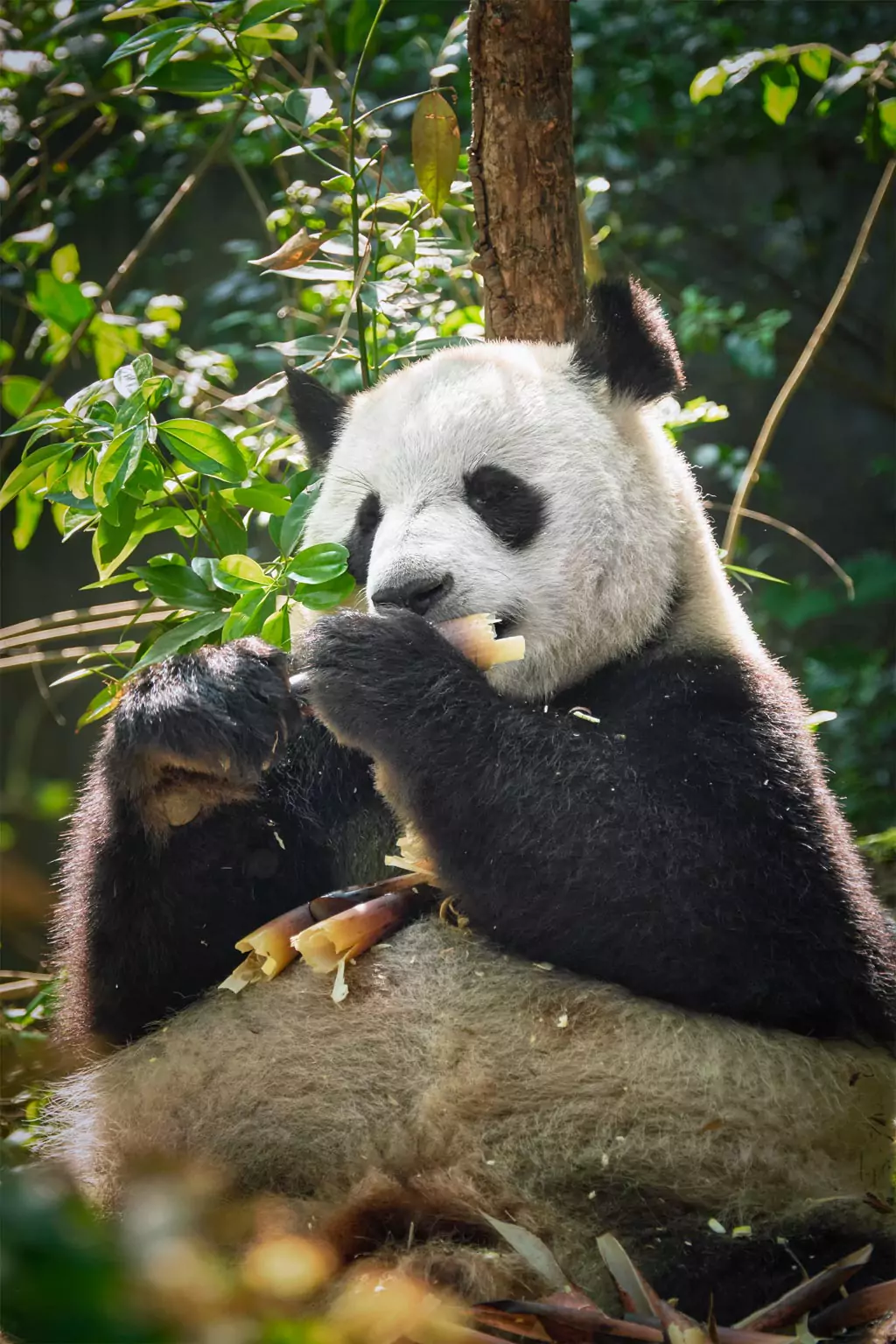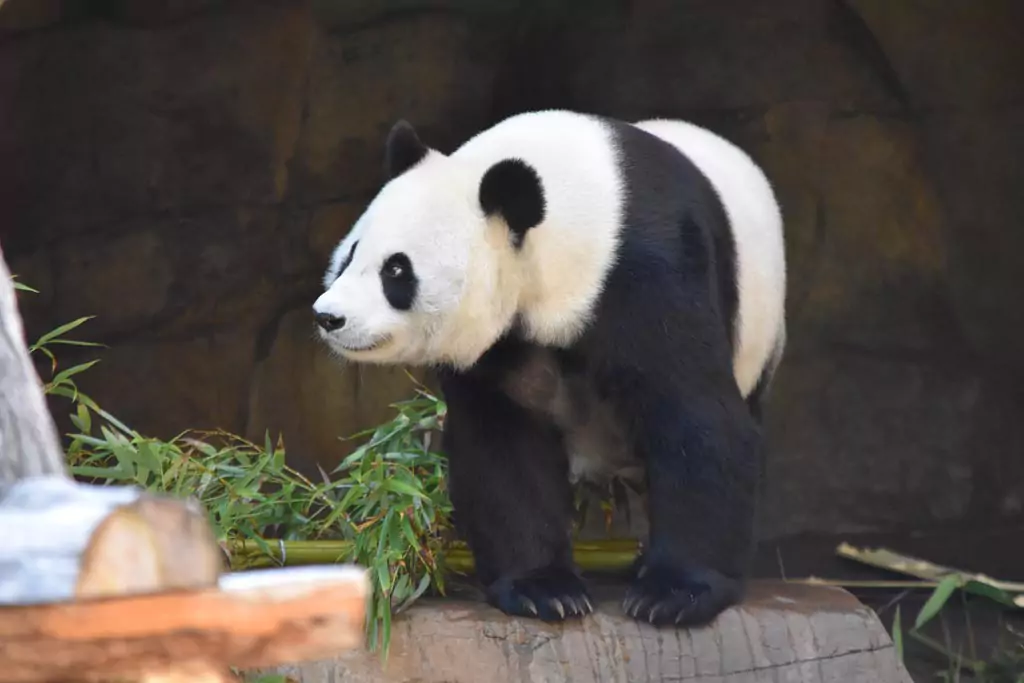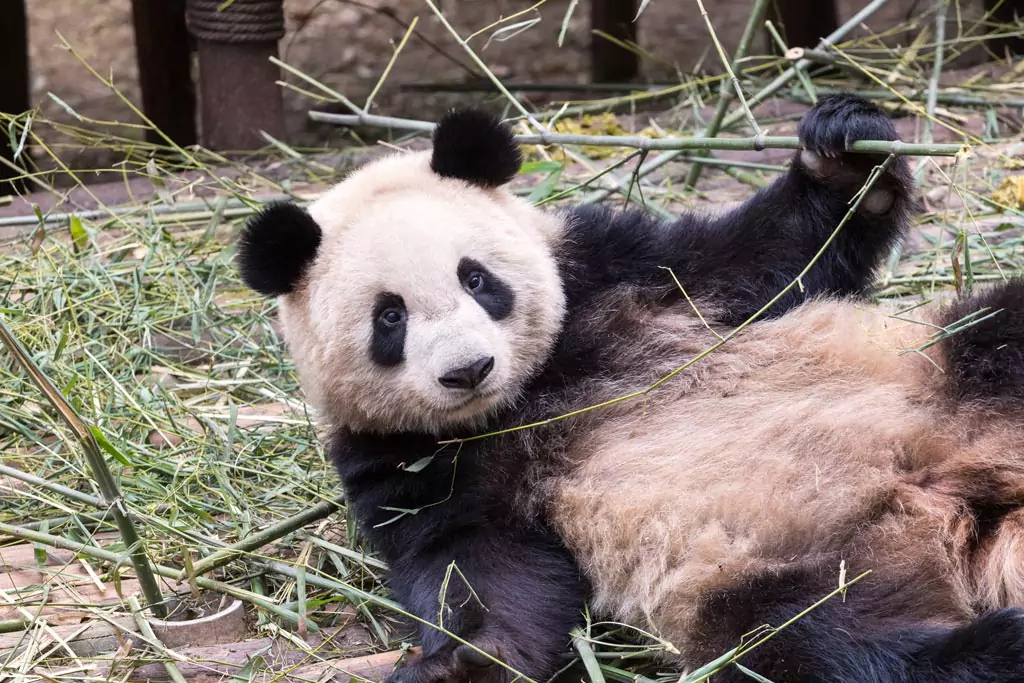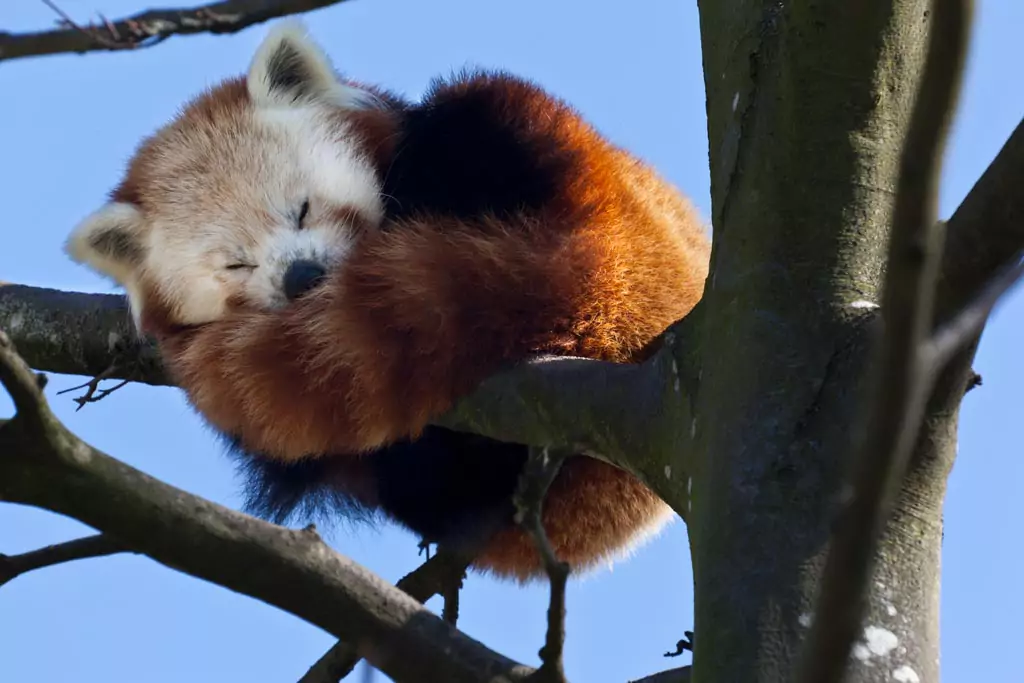Pandas, the iconic black and white bears, have captured the hearts of many around the world. These gentle giants, native to China, are known for their playful nature and insatiable appetite for bamboo. But there's more to pandas than meets the eye. Here are ten fascinating facts about these beloved creatures that might surprise you.
Key Takeaways:
- Pandas have a unique sixth "finger" that functions like a thumb.
- Despite their bamboo diet, pandas were once meat-eaters.
- Conservation efforts have successfully moved pandas from "endangered" to "vulnerable" status.

1. Age in Panda Years
A panda's lifespan is intriguing. One panda year is roughly equivalent to three human years. In the wild, they live for about 18-20 years, but in captivity, their lifespan extends to 25-30 years. The record for the oldest panda was held by Xinxing, who lived up to 38 years, which is akin to 115 human years.
2. The Mysterious Sixth Finger
One of the most distinctive features of a panda is its "sixth finger". This isn't actually a finger, but an unusual wrist bone that functions similarly to a human thumb. This adaptation allows them to grasp bamboo efficiently, molding it into fat cigar shapes for easier consumption.

3. The Tough Choice of Motherhood
In the wild, pandas usually give birth to one cub. However, in captivity, twins are more common. If a wild panda mother has twins, she often has to make a heart-wrenching decision. Due to limited resources, she will typically nurture the stronger cub and abandon the weaker one. This is because panda cubs are entirely dependent on their mothers for the first year of their life.
4. Pandas: The Tree Climbers and Swimmers
Contrary to their bulky appearance, pandas are adept tree climbers. Cubs start climbing trees as early as seven months old. They often climb to escape predators, survey their surroundings, or simply enjoy the view. Additionally, like other bears, pandas are capable swimmers.
5. A Life of Eating and Sleeping
Pandas lead a simple life dominated by eating and sleeping. An average adult panda spends up to 12 hours a day eating, consuming between 12 to 38 kilos of bamboo. When they're not eating or searching for food, they're usually sleeping, taking short naps between meals.
6. Solitary by Nature
Unlike many animals that thrive in groups, pandas are loners. They have their own territories in the wild and are quite territorial. This solitary nature is primarily because of their bamboo diet. Since bamboo offers limited nutrition, pandas need a lot of it, and sharing would mean less food for each individual.

7. The Bamboo Diet and Its Aftermath
Bamboo makes up 99% of a panda's diet. However, their digestive system retains carnivorous traits, meaning they can only digest less than 20% of the bamboo they consume. As a result, pandas eat a lot and, consequently, poop a lot – up to 28 kilos a day!
8. From Carnivores to Bamboo Lovers
Pandas weren't always bamboo eaters. In ancient times, they ate meat. However, as large predators disappeared, pandas transitioned to a bamboo-centric diet to survive. While bamboo is their primary food source, they still enjoy fruits and can consume meat.

9. The Camouflage of Black and White
Ever wondered why pandas are black and white? Their unique coloration serves as camouflage. The white helps them blend in snowy landscapes, while the black offers concealment in the forest's shadows.
10. Mating Season and Panda Cubs
Spring is the mating season for pandas. Female pandas are in heat only once a year, for a brief two to three days. After mating, the males and females separate, with the females solely responsible for rearing the young. Interestingly, newborn panda cubs are pink, fur-less, and blind, gaining their iconic black and white coat after about three weeks.
Frequently Asked Questions (FAQs) About Pandas
1. Why are pandas black and white?
The unique black and white coloration of pandas serves as a camouflage. The white fur helps them blend in snowy landscapes, while the black offers concealment in the forest's shadows. Additionally, the black fur around their eyes helps them identify other pandas, and their black ears are believed to be a sign of aggression toward predators.
2. How much bamboo do pandas eat in a day?
Giant pandas are technically carnivores, but their diets consist nearly exclusively of bamboo. Due to the plant's low nutritional value, pandas consume up to 85 pounds of bamboo daily to maintain their energy levels.
3. Do pandas hibernate?
Unlike most other bears, pandas do not hibernate. Instead, they migrate down the mountains where they live to find warmer temperatures during winter.
4. Are pandas dangerous?
Despite their cute and cuddly appearance, pandas can be dangerous. They have strong teeth and jaw muscles used to crush tough bamboo. It's essential to remember that they are wild animals and can be unpredictable.
5. Why are pandas endangered?
Although pandas don't have many natural predators, their conservation status is "vulnerable," just one step above "endangered." The primary reasons for this status are poaching and habitat loss due to road and railroad construction.

More Interesting Facts About Pandas
Pandas and Their Growth Spurts
Pandas undergo significant growth spurts. From being as tiny as a stick of butter at birth, they can weigh around 100 pounds within a year. Fully mature pandas can be up to six feet long and weigh up to 350 pounds.
Pandas and Their Alone Time
Adult pandas are solitary creatures. They don't spend much time interacting with each other and are generally quiet. However, they occasionally communicate through various means like scent marks, squeaking, barking, growling, or huffing.
Pandas' Role in Their Habitat
Pandas play a crucial role in their forest homes. They not only consume vast amounts of bamboo but also help in spreading seeds that promote vegetation growth. This ensures that other forest residents, like multicolored pheasants and the endangered golden monkey, have a suitable habitat.

Pandas in the US
Only four U.S. cities—Atlanta, Washington, DC, San Diego, and Memphis—house giant pandas. These zoos pay a significant rental fee to the Chinese government, with American zoos generally paying $1 million a year in fees as part of a typical ten-year contract.





